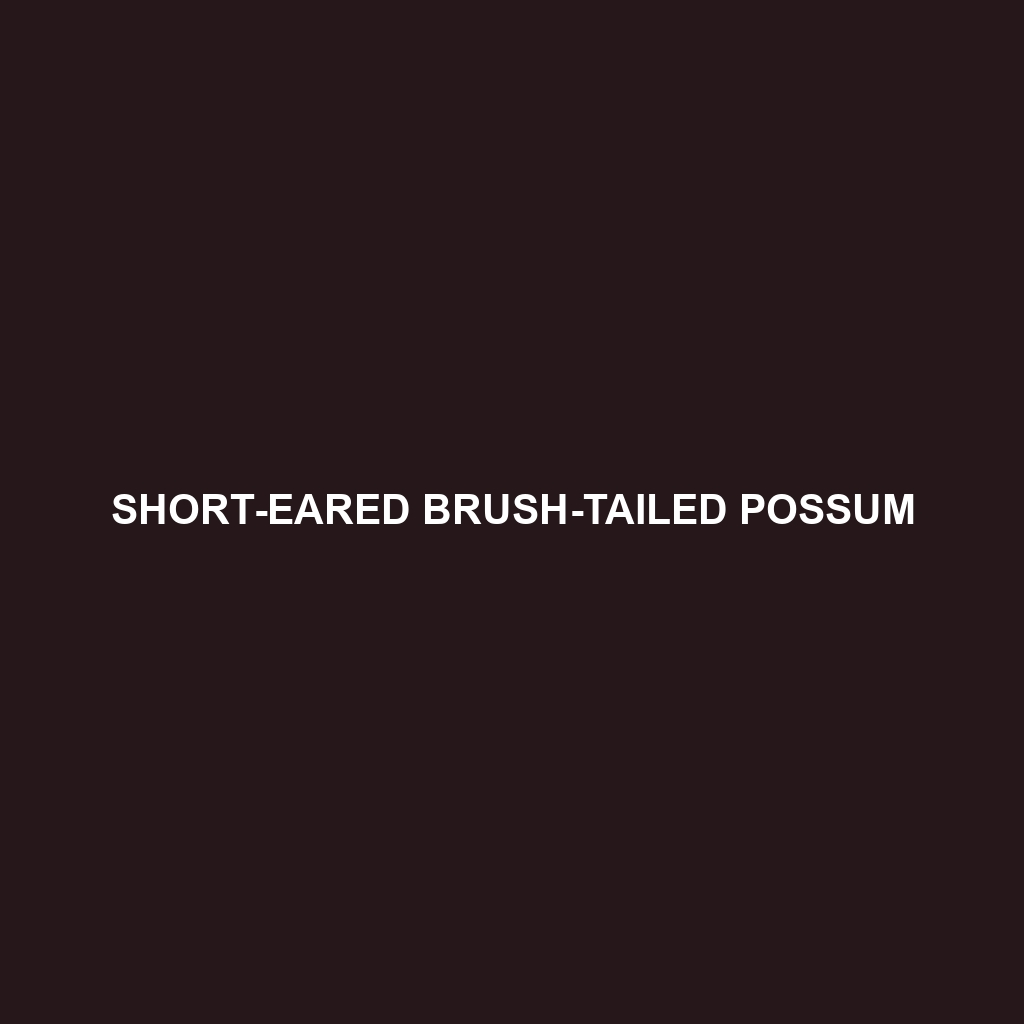Short-eared Brush-tailed Possum
The Short-eared Brush-tailed Possum (Trichosurus caninus) is an enchanting marsupial native to Australia. Known for its distinctive short, rounded ears and bushy tail, this possum is a nocturnal inhabitant of the forests and woodlands. With a variety of intriguing physical and behavioral adaptations, the Short-eared Brush-tailed Possum plays a significant role in its ecosystem.
Physical Characteristics:
Size: Adult Short-eared Brush-tailed Possums typically measure between 40 to 55 cm (16 to 22 inches) in body length, with their bushy tails adding an additional 25 to 40 cm (10 to 16 inches). They usually weigh between 1.2 to 4.5 kg (2.6 to 9.9 lbs).
Coloration: Their fur is dense and soft, generally ranging from grey to dark brown on the dorsal side, with a lighter, sometimes creamy or white underbelly. The tail is notably bushy and darker than the rest of the body.
Special Features: The prominent short, rounded ears are a key distinguishing feature. Their large, reflective eyes are adapted for nocturnal vision, while their strong claws aid in climbing and foraging.
Behaviors:
Social Interactions: Short-eared Brush-tailed Possums are generally solitary creatures, though they do establish overlapping home ranges. They mark their territories using scent glands located on their chests.
Feeding Habits: These possums are herbivorous, with a diet primarily consisting of leaves, fruits, flowers, and occasionally bark. They exhibit selective feeding behaviors to optimize their nutritional intake.
Ecological Roles: As folivores, they play a crucial role in their ecosystem by aiding in plant dispersal and contributing to the control of vegetation growth.
Habitats:
Natural Environment: They thrive in a range of forested habitats, including temperate rainforests, eucalyptus woodlands, and even suburban gardens.
Adaptations: Their strong, prehensile tails and sharp claws make them excellent climbers, allowing them to navigate the forest canopy with ease. Their nocturnal lifestyle helps them avoid daytime predators and extreme temperatures.
Conservation Status:
IUCN Status: The Short-eared Brush-tailed Possum is currently listed as Least Concern by the International Union for Conservation of Nature (IUCN).
Threats: Despite their status, they face threats from habitat loss due to deforestation, urbanization, and predation by introduced species such as foxes and cats.
Conservation Efforts: Efforts to conserve their habitats and control invasive predators are crucial for maintaining their populations.
Fun Facts:
Communication: They communicate using a variety of vocalizations, such as hisses, growls, and clicks, especially during the breeding season or when threatened.
Tail Utility: Their bushy tails are not only used for balance but also serve as a cushion when they sleep on branches.
Longevity: In the wild, Short-eared Brush-tailed Possums can live up to 6 years, while in captivity, they may live over 10 years.
The Short-eared Brush-tailed Possum is a remarkable species, with unique adaptations and behaviors that make it a vital part of Australia’s natural heritage. Understanding and protecting these marsupials ensures the continued balance and health of their ecosystems.
